Opinion & Analysis
Does the Ryder Cup need a 9th man?
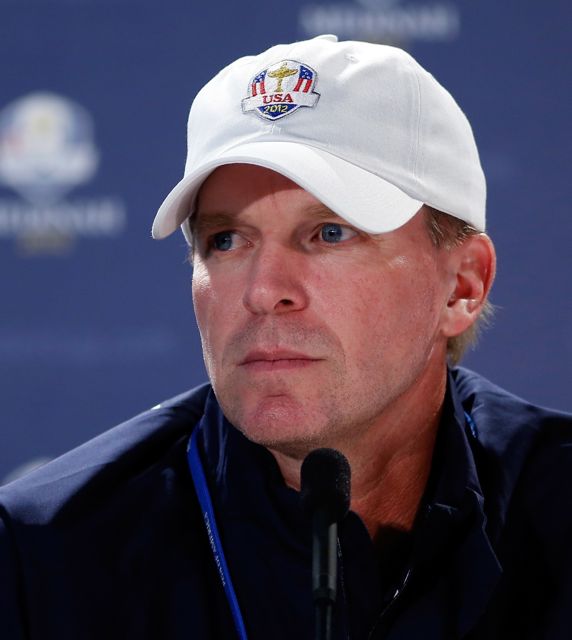
Woulda, coulda, shoulda.
On Wednesday, Tom Watson announced that he would eliminate the fourth captain’s pick and allow the top-nine players on the U.S. Ryder Cup Team to qualify on points.
“There’s not a lot of method in my madness, if you will,” said Watson, 63, who will be the oldest U.S. Ryder Cup captain in history. “I truly think the players themselves ought to have another shot at getting on the team because of … their play.”
In every Ryder Cup, there is always a debate on whether or not the captain’s picks were the correct ones, and there are different schools of thought on the best approach. Should captain’s picks be veteran players who have experience and can mentor the younger guys, or should they be younger players who can provide a spark? Let’s take a hard look at the facts of the last five Ryder Cup matches and get a firm grasp on the importance of those captain’s picks.
CASE STUDY No. 1: 2004 at Oakland Hills
Won by Team Europe (18.5 to 9.5)
The 2004 U.S. Team’s points list had the top-10 point getters making the team, which in this case left veteran player Steve Flesch in the 11th spot. In 2004, Flesch won at Colonial and also tied for seventh at the U.S. Open.
That’s an impressive campaign for most, but it wasn’t enough for captain Hal Sutton to take notice. Sutton eventually went with seasoned veteran Jay Haas, who in 2003 had an impressive showing at the Presidents Cup (he went 2-1-1) and was ranked in the top 20 in the OWGR at the time of his selection to the Ryder Cup. Stewart Cink, who had won twice in 2004 including the prestigious WGC Invitational at Firestone, was the second captain’s pick.
Sutton’s picks were somewhat expected, so there wasn’t a whole lot of discussion about them leading into the matches. Granted, the U.S. got manhandled in the matches, but it was Sutton’s pairings — Phil and Tiger together, mostly — that took most of the heat. Both Cink and Haas finished with records of 1-2-1, which in 2004 was a lot of points for a U.S. player.
Analysis: No amount of clever picks would have been enough for the U.S. to triumph at Oakland Hills.
CASE STUDY No. 2: 2006 at The K Club
Won by Team Europe (18.5 to 9.5)
A good of amount of debate was provided in 2006 as to the captain’s picks and the point system in general. Relatively unknown players like J.J Henry, Vaughn Taylor and Brett Wetterich made the team on points, which led most to believe that the point system was flawed.
John Rollins finished 11th in points and was overlooked so that veterans Stewart Cink and Scott Verplank could be added to the inexperienced squad. Verplank finished the matches with a record of 2-0, which supported captain Tom Lehman’s pick, and Cink who played in all five matches and finished 1-1-3. In the end, much like 2004, it didn’t really matter who Lehman picked because of the birdie onslaught from Team Europe, which was fueled by the inspiring play of Irishman Darren Clarke who had just lost his wife to breast cancer.
Analysis: Hogan, Snead and Nicklaus could have been picked for the squad, but nobody was going to beat Clarke that week, especially on his home turf.
Case Study No. 3: 2008 at Valhalla
Won by the U.S. (16.5 to 11.5)
Captain Paul Azinger made a controversial decision prior to the 2008 matches — he adjusted the qualifications for the U.S. Team to allow only eight players to make it on points, which enabled him to make four captain’s picks.
His pod system proved to be just what the U.S. Team needed to spur them on. He paired players based on personalities rather than their style of play. Even with six rookies on the team, his plan came off without a hitch.
Azinger was able to compensate for the absence of Tiger Woods, who was sidelined with a knee injury. So in this case the “9th player” on the list happened to be the 10th player, Steve Stricker, who in the golf world’s mind was a shoo-in to make the team. Although he provided some fireworks when he halved a match with Ben Curtis against Sergio Garcia and Paul Casey, Stricker finished the matches winless at 0-2-1.
All told, the four captains picks (Hunter Mahan, J.B. Holmes, Steve Stricker and Chad Campbell) finished the matches 6-3-5 and further solidified Captain Azingers model.
Analysis: Although Stricker was the highest-ranked player on the points list (No. 10) and the most experienced, he was the least successful of Azinger’s picks.
Case Study No. 4: 2010 at Celtic Manor
Won by Team Europe (14.5-13.5)
U.S. Team Captain Corey Pavin continued with Azinger’s 2008 model and used four captain’s picks. Pavin decided that injury-laden Anthony Kim, who slipped to 9th in the Ryder Cup standings, would watch the matches from home.
His four captain’s picks of Tiger Woods, Zach Johnson, Ricky Fowler and Stewart Cink finished the week 6-3-5, and left little doubt as to whether Pavin made the right choices. The U.S. Team fought hard in Wales, and if two or three more putts would have gone in perhaps it would have hoisted the cup for a second straight time.
Analysis: Pavin picked the four best players he had access to at that moment, and most agreed that going leaving the injury-plagued Kim off the roster was the right choice.
Case Study No. 5: 2012 at Medinah
Won by Team Europe (14.5 to 13.5)
There was some buzz early in the week in regards to Mahan’s name missing from the roster, but at no point was it 100 percent obvious that Love had made an oversight.
Love’s captains picks of Dustin Johnson, Steve Stricker, Jim Furyk and Brandt Snedeker finished a total of 5-8. The man who shouldered the majority of the scrutiny was Steve Stricker, who finished the week 0-4. But Love’s real mistake was picking Furyk, because there’s just no way an aging Furyk has more value to the future of the U.S. Ryder Cup team than Hunter Mahan, one of the game’s brightest stars who has plenty of Ryder Cup appearances in his future.
Yes, Mahan finished the 2010 Ryder Cup in tears after fatting a chip that could have kept the U.S. in the match, but Furyk blew several tournament leads in 2012, including the Transitions Championship, the U.S. Open and the WGC-Bridgestone Invitational. Shocker that he did the same thing on Sunday at the Ryder Cup, right?
Analysis: Strickers’ 0-4 record and Furyk’s meltdown on the final holes started this debate. In retrospect, either or both of them probably should have been replaced with Hunter Mahan and Nick Watney, all in their early 30s.
The Takeaway
Having the access to pick four key Ryder Cup players seems like a great weapon for a captain to have, but it’s hard to prove that picks have faired any better than comparable players would have over the years. Keeping that in mind, Watson might have a point — what’s wrong with putting the responsibility of the team’s success on the shoulders of the players to qualify?
Up until 1989, that’s how all players qualified for the U.S. Team. And get this, the U.S. completely dominated the Ryder Cup. If you take a look back at how captains have used their picks, they were often to add a couple of experienced veterans (or friends) to the roster. Rarely has a captain used a pick to select a younger player.
If the U.S. Team went back to the old format, there’d be no picks and no debate — just simple math. I can assure you that the guy who is in the 13th spot is going to make sure he’s never there again, sort of like the guy who landed at 126th on the money list. Motivation works in mysterious ways and what it does to a player is amazing.
Click here to see what people are saying in the Tour Talk forum.
- LIKE0
- LEGIT0
- WOW0
- LOL0
- IDHT0
- FLOP0
- OB0
- SHANK0
19th Hole
Vincenzi’s 2024 Zurich Classic of New Orleans betting preview

The PGA TOUR heads to New Orleans to play the 2023 Zurich Classic of New Orleans. In a welcome change from the usual stroke play, the Zurich Classic is a team event. On Thursday and Saturday, the teams play best ball, and on Friday and Sunday the teams play alternate shot.
TPC Louisiana is a par 72 that measures 7,425 yards. The course features some short par 4s and plenty of water and bunkers, which makes for a lot of exciting risk/reward scenarios for competitors. Pete Dye designed the course in 2004 specifically for the Zurich Classic, although the event didn’t make its debut until 2007 because of Hurricane Katrina.
Coming off of the Masters and a signature event in consecutive weeks, the field this week is a step down, and understandably so. Many of the world’s top players will be using this time to rest after a busy stretch.
However, there are some interesting teams this season with some stars making surprise appearances in the team event. Some notable teams include Patrick Cantlay and Xander Schauffele, Rory McIlroy and Shane Lowry, Collin Morikawa and Kurt Kitayama, Will Zalatoris and Sahith Theegala as well as a few Canadian teams, Nick Taylor and Adam Hadwin and Taylor Pendrith and Corey Conners.
Past Winners at TPC Louisiana
- 2023: Riley/Hardy (-30)
- 2022: Cantlay/Schauffele (-29)
- 2021: Leishman/Smith (-20)
- 2019: Palmer/Rahm (-26)
- 2018: Horschel/Piercy (-22)
- 2017: Blixt/Smith (-27)
2024 Zurich Classic of New Orleans Picks
Tom Hoge/Maverick McNealy +2500 (DraftKings)
Tom Hoge is coming off of a solid T18 finish at the RBC Heritage and finished T13 at last year’s Zurich Classic alongside Harris English.
This season, Hoge is having one of his best years on Tour in terms of Strokes Gained: Approach. In his last 24 rounds, the only player to top him on the category is Scottie Scheffler. Hoge has been solid on Pete Dye designs, ranking 28th in the field over his past 36 rounds.
McNealy is also having a solid season. He’s finished T6 at the Waste Management Phoenix Open and T9 at the PLAYERS Championship. He recently started working with world renowned swing coach, Butch Harmon, and its seemingly paid dividends in 2024.
Keith Mitchell/Joel Dahmen +4000 (DraftKings)
Keith Mitchell is having a fantastic season, finishing in the top-20 of five of his past seven starts on Tour. Most recently, Mitchell finished T14 at the Valero Texas Open and gained a whopping 6.0 strokes off the tee. He finished 6th at last year’s Zurich Classic.
Joel Dahmen is having a resurgent year and has been dialed in with his irons. He also has a T11 finish at the PLAYERS Championship at TPC Sawgrass which is another Pete Dye track. With Mitchell’s length and Dahmen’s ability to put it close with his short irons, the Mitchell/Dahmen combination will be dangerous this week.
Taylor Moore/Matt NeSmith +6500 (DraftKings)
Taylor Moore has quickly developed into one of the more consistent players on Tour. He’s finished in the top-20 in three of his past four starts, including a very impressive showing at The Masters, finishing T20. He’s also finished T4 at this event in consecutive seasons alongside Matt NeSmith.
NeSmith isn’t having a great 2024, but has seemed to elevate his game in this format. He finished T26 at Pete Dye’s TPC Sawgrass, which gives the 30-year-old something to build off of. NeSmith is also a great putter on Bermudagrass, which could help elevate Moore’s ball striking prowess.
- LIKE6
- LEGIT1
- WOW1
- LOL0
- IDHT0
- FLOP2
- OB1
- SHANK1
19th Hole
Vincenzi’s 2024 LIV Adelaide betting preview: Cam Smith ready for big week down under

After having four of the top twelve players on the leaderboard at The Masters, LIV Golf is set for their fifth event of the season: LIV Adelaide.
For both LIV fans and golf fans in Australia, LIV Adelaide is one of the most anticipated events of the year. With 35,000 people expected to attend each day of the tournament, the Grange Golf Club will be crawling with fans who are passionate about the sport of golf. The 12th hole, better known as “the watering hole”, is sure to have the rowdiest of the fans cheering after a long day of drinking some Leishman Lager.
The Grange Golf Club is a par-72 that measures 6,946 yards. The course features minimal resistance, as golfers went extremely low last season. In 2023, Talor Gooch shot consecutive rounds of 62 on Thursday and Friday, giving himself a gigantic cushion heading into championship Sunday. Things got tight for a while, but in the end, the Oklahoma State product was able to hold off The Crushers’ Anirban Lahiri for a three-shot victory.
The Four Aces won the team competition with the Range Goats finishing second.
*All Images Courtesy of LIV Golf*
Past Winners at LIV Adelaide
- 2023: Talor Gooch (-19)
Stat Leaders Through LIV Miami
Green in Regulation
- Richard Bland
- Jon Rahm
- Paul Casey
Fairways Hit
- Abraham Ancer
- Graeme McDowell
- Henrik Stenson
Driving Distance
- Bryson DeChambeau
- Joaquin Niemann
- Dean Burmester
Putting
- Cameron Smith
- Louis Oosthuizen
- Matt Jones
2024 LIV Adelaide Picks
Cameron Smith +1400 (DraftKings)
When I pulled up the odds for LIV Adelaide, I was more than a little surprised to see multiple golfers listed ahead of Cameron Smith on the betting board. A few starts ago, Cam finished runner-up at LIV Hong Kong, which is a golf course that absolutely suits his eye. Augusta National in another course that Smith could roll out of bed and finish in the top-ten at, and he did so two weeks ago at The Masters, finishing T6.
At Augusta, he gained strokes on the field on approach, off the tee (slightly), and of course, around the green and putting. Smith able to get in the mix at a major championship despite coming into the week feeling under the weather tells me that his game is once again rounding into form.
The Grange Golf Club is another course that undoubtedly suits the Australian. Smith is obviously incredibly comfortable playing in front of the Aussie faithful and has won three Australian PGA Championship’s. The course is very short and will allow Smith to play conservative off the tee, mitigating his most glaring weakness. With birdies available all over the golf course, there’s a chance the event turns into a putting contest, and there’s no one on the planet I’d rather have in one of those than Cam Smith.

Louis Oosthuizen +2200 (DraftKings)
Louis Oosthuizen has simply been one of the best players on LIV in the 2024 seas0n. The South African has finished in the top-10 on the LIV leaderboard in three of his five starts, with his best coming in Jeddah, where he finished T2. Perhaps more impressively, Oosthuizen finished T7 at LIV Miami, which took place at Doral’s “Blue Monster”, an absolutely massive golf course. Given that Louis is on the shorter side in terms of distance off the tee, his ability to play well in Miami shows how dialed he is with the irons this season.
In addition to the LIV finishes, Oosthuizen won back-to-back starts on the DP World Tour in December at the Alfred Dunhill Championship and the Mauritus Open. He also finished runner-up at the end of February in the International Series Oman. The 41-year-old has been one of the most consistent performers of 2024, regardless of tour.
For the season, Louis ranks 4th on LIV in birdies made, T9 in fairways hit and first in putting. He ranks 32nd in driving distance, but that won’t be an issue at this short course. Last season, he finished T11 at the event, but was in decent position going into the final round but fell back after shooting 70 while the rest of the field went low. This season, Oosthuizen comes into the event in peak form, and the course should be a perfect fit for his smooth swing and hot putter this week.

- LIKE10
- LEGIT2
- WOW0
- LOL0
- IDHT0
- FLOP0
- OB0
- SHANK0
Opinion & Analysis
The Wedge Guy: What really makes a wedge work? Part 1

Of all the clubs in our bags, wedges are almost always the simplest in construction and, therefore, the easiest to analyze what might make one work differently from another if you know what to look for.
Wedges are a lot less mysterious than drivers, of course, as the major brands are working with a lot of “pixie dust” inside these modern marvels. That’s carrying over more to irons now, with so many new models featuring internal multi-material technologies, and almost all of them having a “badge” or insert in the back to allow more complex graphics while hiding the actual distribution of mass.
But when it comes to wedges, most on the market today are still single pieces of molded steel, either cast or forged into that shape. So, if you look closely at where the mass is distributed, it’s pretty clear how that wedge is going to perform.
To start, because of their wider soles, the majority of the mass of almost any wedge is along the bottom third of the clubhead. So, the best wedge shots are always those hit between the 2nd and 5th grooves so that more mass is directly behind that impact. Elite tour professionals practice incessantly to learn to do that consistently, wearing out a spot about the size of a penny right there. If impact moves higher than that, the face is dramatically thinner, so smash factor is compromised significantly, which reduces the overall distance the ball will fly.
Every one of us, tour players included, knows that maddening shot that we feel a bit high on the face and it doesn’t go anywhere, it’s not your fault.
If your wedges show a wear pattern the size of a silver dollar, and centered above the 3rd or 4th groove, you are not getting anywhere near the same performance from shot to shot. Robot testing proves impact even two to three grooves higher in the face can cause distance loss of up to 35 to 55 feet with modern ‘tour design’ wedges.
In addition, as impact moves above the center of mass, the golf club principle of gear effect causes the ball to fly higher with less spin. Think of modern drivers for a minute. The “holy grail” of driving is high launch and low spin, and the driver engineers are pulling out all stops to get the mass as low in the clubhead as possible to optimize this combination.
Where is all the mass in your wedges? Low. So, disregarding the higher lofts, wedges “want” to launch the ball high with low spin – exactly the opposite of what good wedge play requires penetrating ball flight with high spin.
While almost all major brand wedges have begun putting a tiny bit more thickness in the top portion of the clubhead, conventional and modern ‘tour design’ wedges perform pretty much like they always have. Elite players learn to hit those crisp, spinny penetrating wedge shots by spending lots of practice time learning to consistently make contact low in the face.
So, what about grooves and face texture?
Grooves on any club can only do so much, and no one has any material advantage here. The USGA tightly defines what we manufacturers can do with grooves and face texture, and modern manufacturing techniques allow all of us to push those limits ever closer. And we all do. End of story.
Then there’s the topic of bounce and grinds, the most complex and confusing part of the wedge formula. Many top brands offer a complex array of sole configurations, all of them admittedly specialized to a particular kind of lie or turf conditions, and/or a particular divot pattern.
But if you don’t play the same turf all the time, and make the same size divot on every swing, how would you ever figure this out?
The only way is to take any wedge you are considering and play it a few rounds, hitting all the shots you face and observing the results. There’s simply no other way.
So, hopefully this will inspire a lively conversation in our comments section, and I’ll chime in to answer any questions you might have.
And next week, I’ll dive into the rest of the wedge formula. Yes, shafts, grips and specifications are essential, too.
- LIKE30
- LEGIT7
- WOW1
- LOL1
- IDHT2
- FLOP3
- OB1
- SHANK3
-

 19th Hole2 weeks ago
19th Hole2 weeks agoDave Portnoy places monstrous outright bet for the 2024 Masters
-

 19th Hole2 weeks ago
19th Hole2 weeks agoTiger Woods arrives at 2024 Masters equipped with a putter that may surprise you
-

 19th Hole15 hours ago
19th Hole15 hours ago‘Absolutely crazy’ – Major champ lays into Patrick Cantlay over his decision on final hole of RBC Heritage
-

 19th Hole3 weeks ago
19th Hole3 weeks agoReport: Tiger Woods has ‘eliminated sex’ in preparation for the 2024 Masters
-

 19th Hole1 week ago
19th Hole1 week agoTwo star names reportedly blanked Jon Rahm all week at the Masters
-

 19th Hole7 days ago
19th Hole7 days agoReport: LIV Golf identifies latest star name they hope to sign to breakaway tour
-

 19th Hole1 week ago
19th Hole1 week agoNeal Shipley presser ends in awkward fashion after reporter claims Tiger handed him note on 8th fairway
-

 19th Hole6 days ago
19th Hole6 days agoBrandel Chamblee has ‘no doubt’ who started the McIlroy/LIV rumor and why

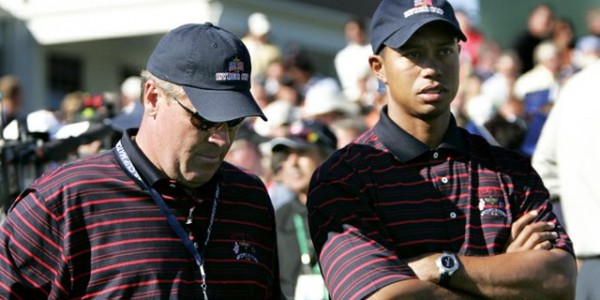
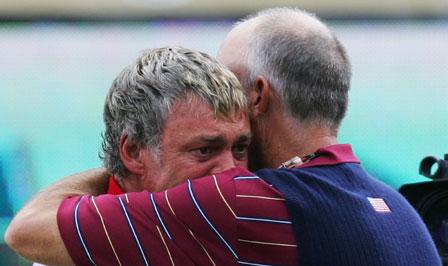
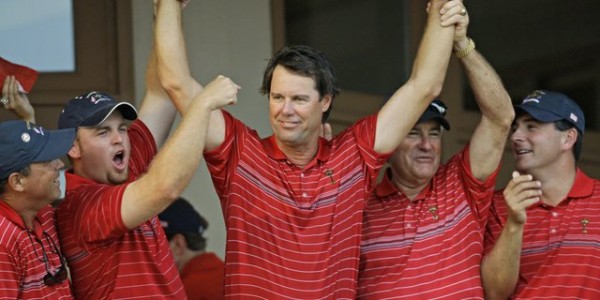

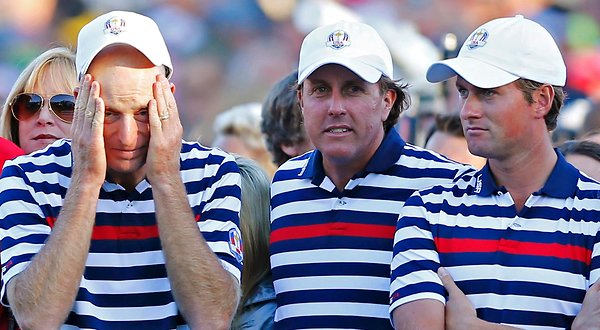


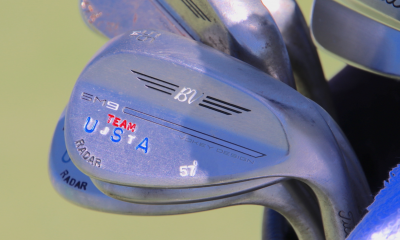

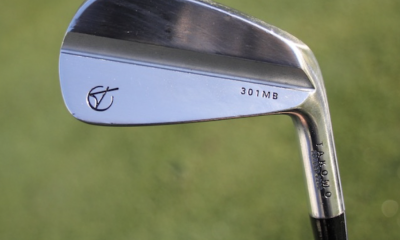

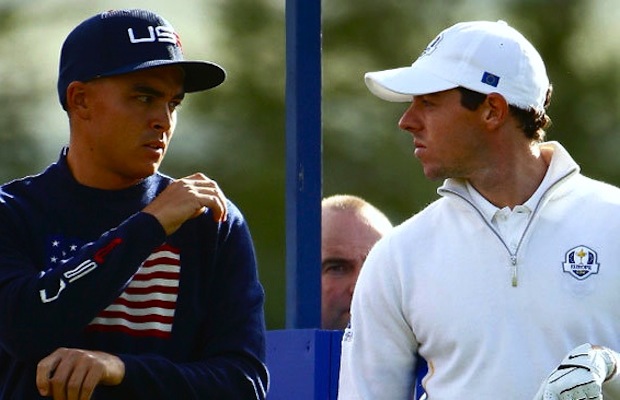
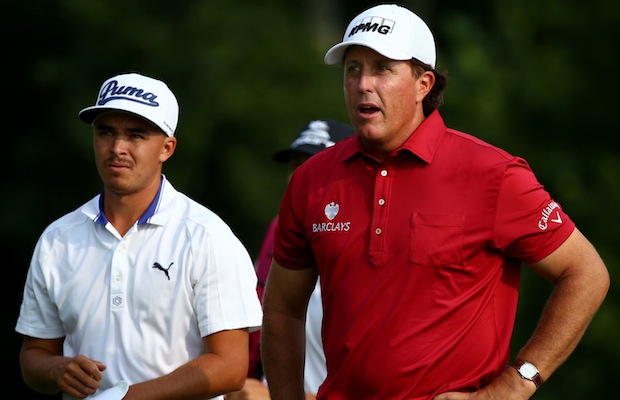
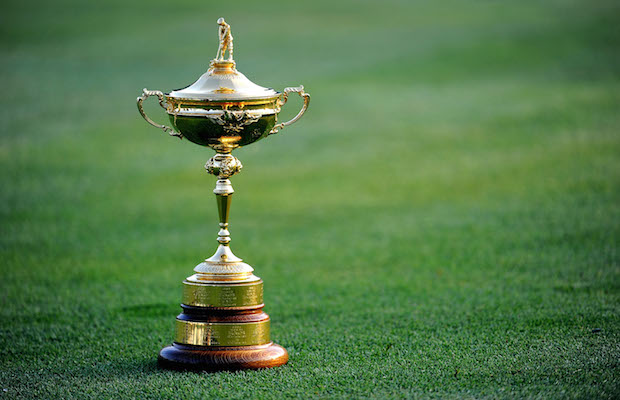
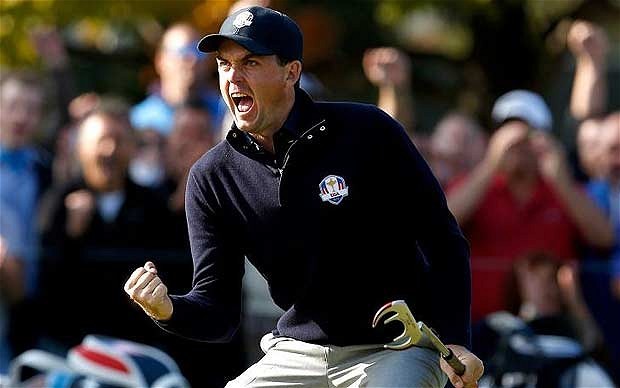












GAMES
May 2, 2013 at 7:46 pm
Picking the #10 player in the world (Stricker) over #19 (Mahan) and #29 (Watney) was a no-brainer. No one could have seen Stricker’s 0-4 record coming.
BTW, if the same decision had to be made today, picking Stricker would be EVEN MORE of a no-brainer as he has moved UP to #9 in the world, while Mahan and Watney have both fallen three spots, to #22 and #23, respectively.
I know Steve Stricker’s modest midwest demeanor doesn’t play well with you people on the coasts. But, the reality is Stricker simply was AND IS a better player than either Watney or Mahan…
Brandon
Mar 25, 2013 at 12:01 pm
I still think leaving Mahan off last years team was a mistake, especially considering how well he plays in match play. I definitely like the idea of one less captains picks I would say get rid of them all together and just take the top 12 at the time. I don’t think you can go wrong with pick the guys who are playing the best that year.